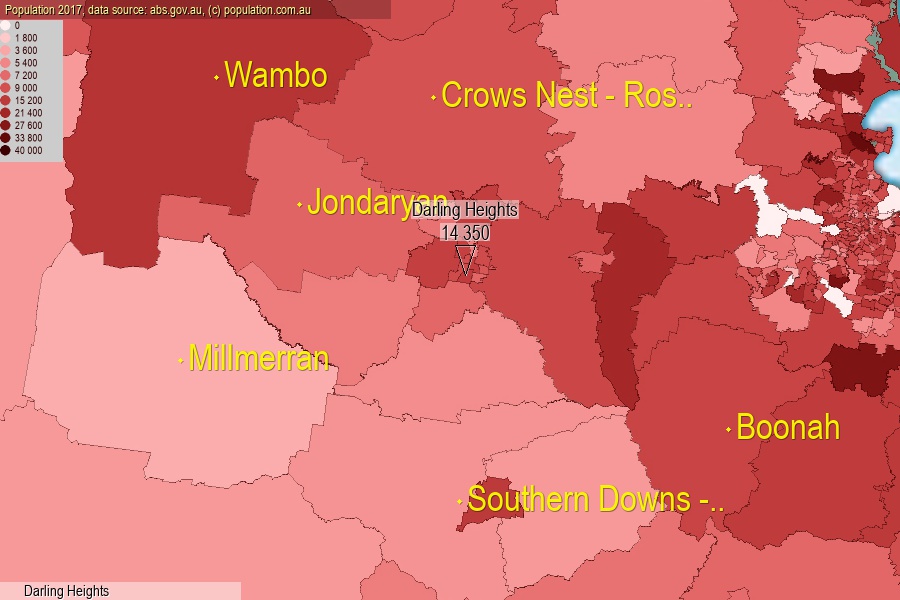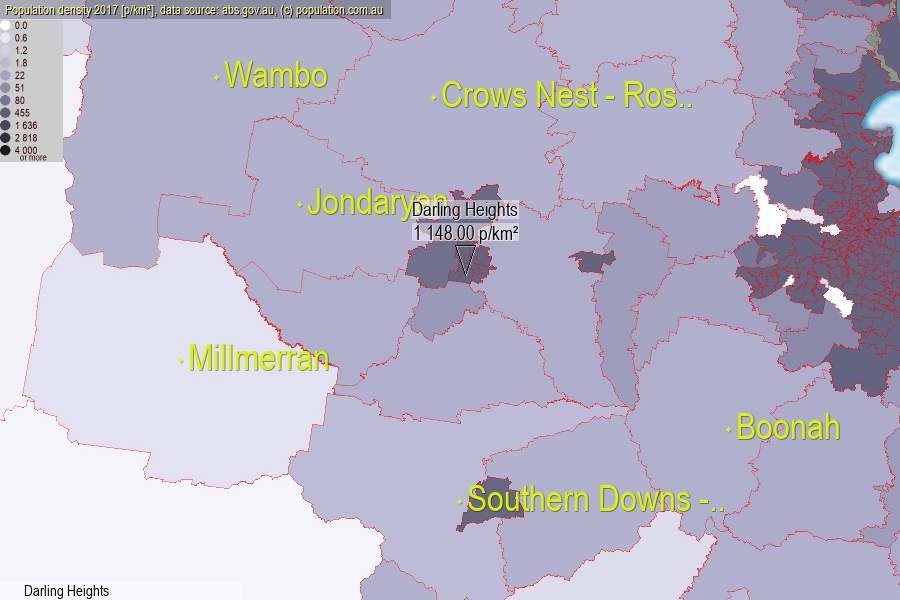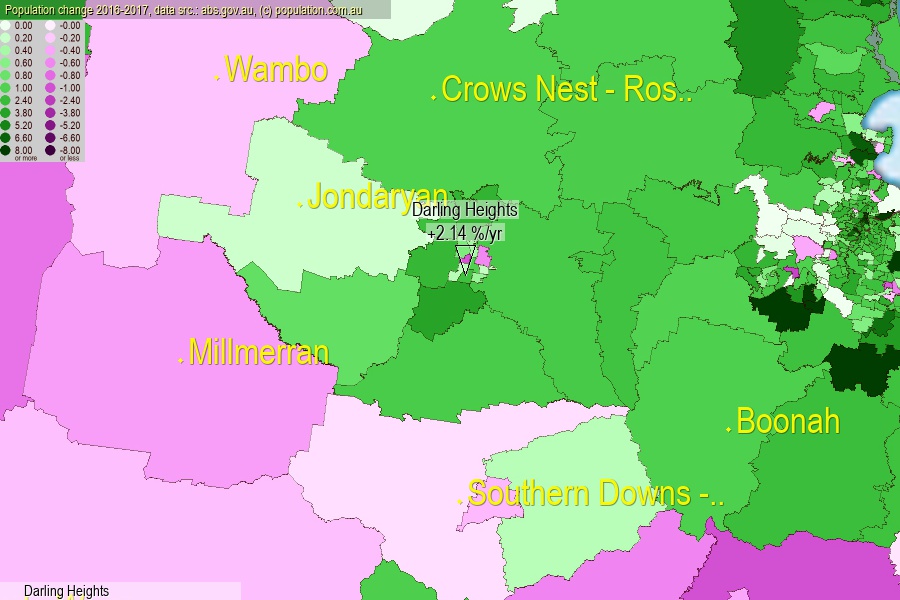 population.com.au
population.com.auLast official estimated population of Darling Heights (as Statistical Area Level 2) was 14 350 people (on 2017-06-30)[2]. This was 0.06% of total Australian population and 0.288% of QLD population. Area of Darling Heights is 12.50 km², in this year population density was 1 148.00 p/km² . If population growth rate would be same as in period 2016-2017 (+2.14%/yr), Darling Heights population in 2025 would be 16 992. [0]



Click to enlarge. Darling Heights is located in the center of the images.
Population [people], population density [p./km²] and population change [%/year] [2]
View borders » (new window) [4]
[1991-1992] +9.25 %/Yr.
[1992-1993] +8.79 %/Yr.
[1993-1994] +5.81 %/Yr.
[1994-1995] +5.25 %/Yr.
[1995-1996] +4.96 %/Yr.
[1996-1997] +0.54 %/Yr.
[1997-1998] +2.95 %/Yr.
[1998-1999] +1.04 %/Yr.
[1999-2000] +1.87 %/Yr.
[2000-2001] +0.86 %/Yr.
[2001-2002] +2.25 %/Yr.
[2002-2003] +2.23 %/Yr.
[2003-2004] +3.60 %/Yr.
[2004-2005] +5.87 %/Yr.
[2005-2006] +2.13 %/Yr.
[2006-2007] +0.37 %/Yr.
[2007-2008] +1.02 %/Yr.
[2008-2009] +1.48 %/Yr.
[2009-2010] +0.68 %/Yr.
[2010-2011] +0.17 %/Yr.
[2011-2012] +3.00 %/Yr.
[2012-2013] +2.22 %/Yr.
[2013-2014] +1.85 %/Yr.
[2014-2015] +1.70 %/Yr.
[2015-2016] +1.33 %/Yr.
[2016-2017] +2.14 %/Yr.
[0] Calculated with linear interpolation from officially estimated population
[1] Read more about SA2 and Australian Statistical Geography Standard (ASGS) on abs.gov.au
[2] Population data from Australian Bureau of Statistics (Population and density: 2017; change: 2016-2017)
[3] Digital Boundaries: Australian Statistical Geography Standard (ASGS) 2016.
[4] Border coordinates are simplifyed using Ramer-Douglas-Peucker algorithm.